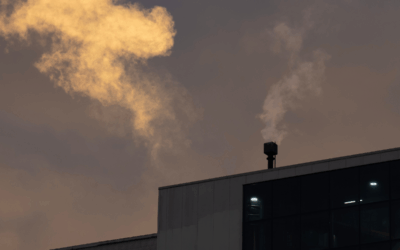Climate change is increasing the intensity of extreme weather across the globe—including storms. Warmer global temperatures provide more energy to fuel storms, making them more powerful and less predictable. As a result, storm-related hazards such as hail, damaging winds, and flash floods are becoming more frequent and severe in many parts of Canada. Ongoing scientific research continues to clarify the links between human-caused climate change and the intensification of storms (Smith & Malena-Chan 2024).
Projecting the future effects of climate change on storms in Canada is challenging due to their complex, localized nature. In Canada, changes to the factors that drive storms can differ significantly by region and the smaller scale and short duration of many convective storms make them difficult to model accurately with global climate models. While warming is expected to increase the frequency and intensity of convective storms in Canada, the exact timing, location, and severity remain uncertain. More research specific to Canada is needed to improve projections and better understand local variations (Smith & Malena-Chan 2024).
Climate change is making storms stronger and more frequent
- Convective storms—including thunderstorms, hailstorms, tornados and hurricanes—occur when warm and moist air rises in the atmosphere. As the atmosphere warms with climate change, it can hold more moisture (NASA 2022).
- Over land, warming surface temperatures make moist air rise more quickly, providing more fuel for severe thunderstorms (Smith & Malena-Chan 2024). Similarly, rising ocean temperatures due to global warming allow surface water to evaporate and rise more quickly, fuelling more powerful and intense hurricanes (Madge & Smith 2024).
- Favourable conditions for the development of severe convective storms are expected to increase by 5 to 20 per cent for each degree °C of global warming (Lepore et. al 2021).
Storms are racking up damages in parts of Canada
- Storm hazards—such as strong winds, hail, and lightning—pose serious risks to infrastructure, agriculture, and communities and are a major driver of catastrophic losses in Canada (Ouranos, n.d.).
- Large hail is one of the most costly severe storm-related hazards in North America, with annual insured losses routinely exceeding $10 billion across the continent (Loomis 2018).
- In August 2024, a hailstorm in Calgary became the second costliest extreme weather event in Canadian history, with over $3.2 billion in insured losses (IBC 2025).
- Straightline winds—winds that blow in a straight path, usually from thunderstorms or severe weather systems—are one type of extreme weather growing more frequent and destructive due to climate change (Prein 2023). Between 2008 and 2021, roughly two thirds of catastrophic insured losses in Ontario and Quebec were caused by windstorms (Hadavi et. al, 2022).
- The 2022 Derecho—a powerful, fast-moving line of wind and thunderstorms—caused about $1 billion in insured losses across Ontario and Quebec (IBC 2023).
Many regions of Canada will likely experience more frequent and severe storms as climate change accelerates
- Climate models project more severe thunderstorms and heavy rainfall in Canada, particularly in the Prairies and eastern regions (Kirchmeier-Young & Zhang 2020; Loxley 2022; Ouranos, n.d.).
- In southern Quebec, rising temperatures are expected to increase atmospheric instability, leading to more thunderstorms and more frequent short bursts of intense rainfall (Ouranos, n.d.). In central Alberta, climate modelling also projects increased storm intensity in the coming decades (Gan et. al, 2022).
- In Atlantic Canada, climate change is making hurricanes more frequent and more powerful (Madge & Smith 2024).
- On the Pacific coast, climate change is increasing the intensity and frequency of atmospheric rivers that bring extreme rainfall, increasing the likelihood of events, like the one which brought severe flooding and landslides to B.C. in 2021, by 45 to 60 per cent (Gillett et. al 2022).
Climate change is altering patterns of damaging winds, tornadoes, and hail
- While atmospheric warming will likely alter the frequency, severity, and areas affected by tornadoes across Canada, more research is needed to fully understand the nature of the changes anticipated (Jafarpur & Smith 2024).
- Some evidence has suggested that Canadian tornados and severe wind hotspots are shifting eastwards—a worrying trend that would increase risks for densely populated parts of Ontario and Quebec (Zadorsky 2024).
- Atmospheric warming from greenhouse gas emissions makes larger and more damaging hailstones more likely to develop (Gensisni et. al, 2024). In southern Alberta, hailstorms are expected to become more frequent and severe due to climate change (Zhao 2024).
Climate change is increasing the frequency, strength, and rapid intensification of tropical cyclones and hurricanes, particularly in the Atlantic
- Most of the heat energy captured by greenhouse gas emissions is absorbed by the oceans, providing fuel for increasingly powerful tropical cyclones and hurricanes (Climate Central, 2024). Human-driven increases in sea surface temperature made 84 per cent of hurricanes from 2019-2023 more powerful than they would have otherwise been (Gilford et. al 2024). Every hurricane in 2024 had higher wind speeds because of climate change (Climate Central 2024).
- Hurricanes are forming more frequently in the Atlantic Ocean due to human-caused warming (Emanuel 2021). The proportion of very intense tropical cyclones is projected to increase worldwide, and their destructive power is enhanced by rising sea levels and increased precipitation rates associated with anthropogenic climate change (Knutson et. al 2021).
- Hurricanes in the Atlantic are intensifying more rapidly, leaving communities less time to prepare. It is now twice as likely for hurricanes in the Atlantic to develop from a category 1 to a major hurricane (category 3 or higher) within 24 hours compared to the 1970s and 80s (Garner, 2023).
- Sea-level rise fuelled by climate change leads to more powerful storm surges, increasing the extent of coastal flooding and damage from hurricanes (Madge & Smith 2024).
- Hurricanes pose growing economic and safety risks for communities in Atlantic Canada, with high winds, flooding, and storm surges destroying homes and coastal infrastructure. Hurricanes are projected to form and intensify at higher latitudes in a warming climate, increasing the probability that more dangerous storms will reach Canadian coasts (Studholme et. al 2022).
Canada needs to adapt to changing and intensifying storm patterns
- More research is needed to understand changing storm patterns and regional differences with more certainty. Forecasting and alert systems for extreme weather need to be improved to allow communities to better prepare and respond to dangerous events (Bongiorno 2024; MacDonald 2024).
- Building codes must be enhanced to favour more resilient materials, designs and constructions in high risk areas, including wind and hail-resilient roofing.
- Government supported grants, rebates, and retrofit programs can expedite more resilient construction and renovation (Porter 2023; Wawanesa 2021).
- Land use regulations and infrastructure can be deployed to better protect coastal communities from storms and hurricanes. For example, communities can ensure buildings are located far enough from coastal areas prone to storm surge and erosion through minimum setback standards, or by using nature-based solutions to stabilize shorelines and increase coastal resilience (Richardson & Otero 2012; Halifax Regional Municipality 2024).
- Updating land use policies and incentives can help to direct new housing development away from areas prone to hail and tornadoes and other storm hazards (Strader et al. 2018).
Resources
- The Canadian Severe Storms Laboratory (CSSL) (Western University)
- Climate Change and Thunderstorms (ClimateData)
- Hurricanes and Climate Change in Atlantic Canada (ClimateData)
- Wind (Institute for Catastrophic Loss Reduction)
- Hail Resource Hub (Institute for Catastrophic Loss Reduction)
- How can we prepare our homes and buildings to be climate resilient? (Climate Resilient Retrofits)
Experts available for comment and background information on this topic
- Ryan Ness is Director of Adaptation Research at the Canadian Climate Institute and the lead researcher on the Institute’s Costs of Climate Change series (Eastern Time, English and French).
For more information or to interview an expert, please contact
Claudine Brulé
Lead, Communications and External Affairs
cbrule@climateinstitute.ca
(514) 358-8525 (Eastern Time, French/English)
Krystal Northey
Lead, Public Affairs
knorthey@climateinstitute.ca
(226) 212-9883 (Mountain Time, English)
References (click to expand)
Bongiorno, Joe. 2024. “Researchers Say Canada Must Improve Its Tornado Warning System to Save Lives.” CBC News. https://www.cbc.ca/news/canada/montreal/tornado-warnings-canada-quebec-1.7286546.
Calvin, Katherine, Dipak Dasgupta, Gerhard Krinner, Aditi Mukherji, Peter W. Thorne, Christopher Trisos, José Romero, et al. 2023. IPCC, 2023: Climate Change 2023: Synthesis Report. Contribution of Working Groups I, II and III to the Sixth Assessment Report of the Intergovernmental Panel on Climate Change [Core Writing Team, H. Lee and J. Romero (Eds.)]. IPCC, Geneva, Switzerland. Intergovernmental Panel on Climate Change (IPCC). doi:10.59327/IPCC/AR6-9789291691647.
Contant, Jason. 2024. “Calgary Hailstorm: Should City Reinstate Resilient Roofing Program?” Canadian Underwriter. https://beta.canadianunderwriter.ca/news/claims/calgary-hailstorm-should-city-reinstate-resilient-roofing-program/.
“Cost of Historic Calgary Hailstorm Continues to Rise.” 2025. Insurance Bureau of Canada. https://www.ibc.ca/news-insights/news/cost-of-historic-calgary-hailstorm-continues-to-rise.
Emanuel, Kerry. 2021. “Atlantic Tropical Cyclones Downscaled from Climate Reanalyses Show Increasing Activity over Past 150 Years.” Nature Communications 12(1): 7027. doi:10.1038/s41467-021-27364-8.
Gan, Kai Ernn, Chun Chao Kuo, Thian Yew Gan, Holger Schüttrumpf, Vijay Singh, and Harri Koivusalo. 2023. “Coupled and Stand-Alone Regional Climate Modeling of Intensive Storms in Western Canada.” Journal of Hydrologic Engineering 28(3): 05022023. doi:10.1061/JHYEFF.HEENG-5872.
Garner, Andra J. 2023. “Observed Increases in North Atlantic Tropical Cyclone Peak Intensification Rates.” Scientific Reports 13(1): 16299. doi:10.1038/s41598-023-42669-y.
Gensini, Vittorio A., Walker S. Ashley, Allison C. Michaelis, Alex M. Haberlie, Jillian Goodin, and Brendan C. Wallace. 2024. “Hailstone Size Dichotomy in a Warming Climate.” npj Climate and Atmospheric Science 7(1): 185. doi:10.1038/s41612-024-00728-9.
Gilford, Daniel, and Joseph Giguere. 2024. Climate Change Increased Wind Speeds for Every 2024 Atlantic Hurricane: Analysis. Climate Central. https://www.climatecentral.org/report/2024-hurricane-attribution.
Gilford, Daniel M, Joseph Giguere, and Andrew J Pershing. 2024. “Human-Caused Ocean Warming Has Intensified Recent Hurricanes.” Environmental Research: Climate 3(4): 045019. doi:10.1088/2752-5295/ad8d02.
Gillett, Nathan P., Alex J. Cannon, Elizaveta Malinina, Markus Schnorbus, Faron Anslow, Qiaohong Sun, Megan Kirchmeier-Young, et al. 2022. “Human Influence on the 2021 British Columbia Floods.” Weather and Climate Extremes 36: 100441. doi:10.1016/j.wace.2022.100441.
Greenan, Blair J. W., Thomas S. James, John W. Loder, Pierre Pepin, Kumiko Azetsu-Scott, Debby Ianson, Roberta C. Hamme, et al. 2019. Chapter 7 — Canada’s Changing Climate Report. Ottawa, Ontario: Government of Canada. https://changingclimate.ca/CCCR2019/chapter/7-0/ (March 25, 2025).
Hadavi, Mohammad, Lutong Sun, and Djordje Romanic. 2022. “Normalized Insured Losses Caused by Windstorms in Quebec and Ontario, Canada, in the Period 2008–2021.” International Journal of Disaster Risk Reduction 80: 103222. doi:10.1016/j.ijdrr.2022.103222.
Hosansky, David. 2023. “Damaging Thunderstorm Winds Increasing in Central U.S.” University Corporation for Atmospheric Research. https://news.ucar.edu/132927/damaging-thunderstorm-winds-increasing-central-us.
Jafarpur, Pouriya, and Ryan Smith. 2024. “Tornadoes and Climate Change in Canada.” ClimateData.ca. https://climatedata.ca/tornadoes-and-climate-change-in-canada/.
Kirchmeier-Young, Megan C., and Xuebin Zhang. 2020. “Human Influence Has Intensified Extreme Precipitation in North America.” Proceedings of the National Academy of Sciences 117(24): 13308–13. doi:10.1073/pnas.1921628117.
Knutson, Thomas R., Maya V. Chung, Gabriel Vecchi, Jingru Sun, Tsung-Lin Hsieh, and Adam J. P. Smith. 2021. Climate Change Is Probably Increasing the Intensity of Tropical Cyclones. Zenodo. doi:10.5281/ZENODO.4570334.
Lepore, Chiara, Ryan Abernathey, Naomi Henderson, John T. Allen, and Michael K. Tippett. 2021. “Future Global Convective Environments in CMIP6 Models.” Earth’s Future 9(12): e2021EF002277. doi:10.1029/2021EF002277.
Loomis, Ilima. 2018. “Hail Causes the Most Storm Damage Costs Across North America.” Eos 99. doi:10.1029/2018EO104487.
Loxley, Matthew. 2022. A Snapshot of the Changing Prairie Climate. Winnipeg: ClimateWest. https://climatewest.ca/publications/a-snapshot-of-the-changing-prairie-climate/
MacDonald, Michael. 2024. “Use of Alert System Delayed during Deadly Flash Flooding in Nova Scotia: Report.” CBC News. https://www.cbc.ca/news/canada/nova-scotia/alert-system-delayed-deadly-flash-flooding-nova-scotia-1.7204197.
Madge, Carly, and Ryan Smith. 2025. “Hurricanes and Climate Change in Atlantic Canada.” ClimateData.ca. https://climatedata.ca/hurricanes–and-climate-change-in-atlantic-canada/.
Nasa Science Editorial Team. 2022. “Steamy Relationships: How Atmospheric Water Vapor Amplifies Earth’s Greenhouse Effect.” NASA. https://science.nasa.gov/earth/climate-change/steamy-relationships-how-atmospheric-water-vapor-amplifies-earths-greenhouse-effect/.
Porter, Keith. 2023. High-Wind Design of New Woodframe Houses Has an Average Benefit-Cost Ratio of 6:1 in Canada. Toronto, ON: Institute for Catastrophic Loss Reduction. https://scc-ccn.ca/resources/publications/high-wind-design-new-woodframe-houses-has-average-benefit-cost-ratio-61
Prein, Andreas F. 2023. “Thunderstorm Straight Line Winds Intensify with Climate Change.” Nature Climate Change 13(12): 1353–59. doi:10.1038/s41558-023-01852-9.
“Resiliency Measures to Protect Your Home.” 2025. Natural Resources Canada. https://natural-resources.canada.ca/energy-efficiency/home-energy-efficiency/canada-greener-homes-initiative/resiliency-measures-protect-your-home.
Richardson, Gregory R. A., and José Otero. 2012. Land Use Planning Tools for Local Adaptation to Climate Change. Ottawa, Ontario: Government of Canada.
“Severe Weather in 2022 Caused $3.1 Billion in Insured Damage — Making It the 3rd Worst Year for Insured Damage in Canadian History.” 2023. Insurance Bureau of Canada. https://www.ibc.ca/news-insights/news/severe-weather-in-2022-caused-3-1-billion-in-insured-damage-making-it-the-3rd-worst-year-for-insured-damage-in-canadian-history.
“Shore Road: Building with Nature.” 2024. Halifax Regional Municipality. https://www.halifax.ca/about-halifax/environment-climate-change/halifact-acting-climate-together/featured-projects/shore.
Smith, Ryan, and Rachel Malena-Chan. 2024. “Climate Change and Thunderstorms.” ClimateData.ca. https://climatedata.ca/climate-change-and-thunderstorms/.
Strader, Stephen M., Walker S. Ashley, Thomas J. Pingel, and Andrew J. Krmenec. 2018. “How Land Use Alters the Tornado Disaster Landscape.” Applied Geography 94: 18–29. doi:10.1016/j.apgeog.2018.03.005.
Studholme, Joshua, Alexey V. Fedorov, Sergey K. Gulev, Kerry Emanuel, and Kevin Hodges. 2022. “Poleward Expansion of Tropical Cyclone Latitudes in Warming Climates.” Nature Geoscience 15(1): 14–28. doi:10.1038/s41561-021-00859-1.
“Thunderstorms and Lightning – Impacts.” Ouranos. https://www.ouranos.ca/en/climate-phenomena/thunderstorms-lightning-impacts.
“Thunderstorms and Lightning – Projected Changes.” Ouranos. https://www.ouranos.ca/en/climate-phenomena/thunderstorms-lightning-projected-changes.
Wawanesa Insurance. 2021. “10 Ways to Protect the Roof over Your Head.” https://www.wawanesa.com/canada/blog/protect-your-roof.
Westra, S., H. J. Fowler, J. P. Evans, L. V. Alexander, P. Berg, F. Johnson, E. J. Kendon, G. Lenderink, and N. M. Roberts. 2014. “Future Changes to the Intensity and Frequency of Short-Duration Extreme Rainfall.” Reviews of Geophysics 52(3): 522–55. doi:10.1002/2014RG000464.
Zadorsky, Justin. 2024. “Weather Extremes and Adapting to an Increasingly Dangerous World.” Western News. https://news.westernu.ca/2024/04/our-warming-planet-weather-extremes/.Zhao, Emma. 2024. “Research Team Descends on Alberta to Track Frequency, Severity of Hailstorms.” CBC News. https://www.cbc.ca/news/canada/edmonton/alberta-hail-storms-ontario-climatology-1.7267198.





